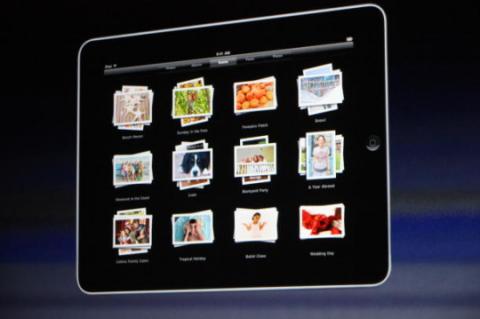Medicine is the Apple iPad sweet spot


The answer is it's what your doctor has been dreaming of ever since the PC revolution began.
Take a look at the specs. It's a half-inch deep and weighs just 1.5 pounds. The screen is about 10 inches on the diagonal. It's basically a smart notepad.
Imagine this in a flip-up case, in every examination room at your clinic.
The nurse sets up the chart, the doctor walks in with a stylus and examines you, and when he's done the chart goes into the file and the prescription is waiting at the desk for you, printed clearly, along with your Coordination of Care Record. Hand the nurse your credit card and you're off.
Doctors love iPhones. They know how to use iPhones. Which means they're half way through their iPad training already. And all those clever little software companies that dialed-down their medical applications to fit on the iPhone? They're halfway to iPad models.
The low-end version of the iPad goes fur under $500, about where the iPhone started, and comes with WiFi, which most hospitals and clinics have. The iPhone comes down to $200 with a phone carrier subsidy, and the iPad can be similarly subsidized by an Electronic Medical Record (EMR) company so it's practically free.
The initial chip memory capacity is "just" 16 Gigabytes, but that's enough for lots of great stuff. You can collect videos about a patient's condition and treatment, then show them while you point out things with the stylus. A 16 Gigabyte capacity means there is plenty of room for a patient's current chart, including all their imaging tests.
You can put a full day's work in there and give one to every doctor. Or you can load charts remotely from the nursing station as each patient is admitted, and keep one in each exam room. At these prices you can do both -- one per doctor, one per exam room. My own internist is in a two-doc shop with four rooms, so for just $3,000 they're outfitted.
Quite simply, this device transforms medical practice and delivers a solid, easy-to-follow upgrade path directly from paper. Put security on the clinic's WiFi (you probably have that already) and HIPAA is happy. A little VOIP and pager software and you can follow the staff wherever they go, which is one reason WiFi is so cool in a hospital setting to begin with.
You can interface this with either an in-house EMR system or a SaaS system -- just run a small clinic's signals directly through a router at the nurse's station.
I can't see a thing wrong with it. It's cheap, it's easy to use, it's got all the power and connectivity you want, and it looks pretty cool too.
How bad do you want one? [poll=32]